|
Have you ever seen a lizard hurtling over your head? How about a frog sailing down from the tree tops? I’m not making these animals up. They belong to one of earth’s most astonishing groups of animals. Gliders. Gliders travel through the air, but they don’t fly. Instead, they glide. What’s the difference? Well, to get itself off the ground, a bird, bat, or insect has to generate a force called lift. A flying animal generates lift using its wings, which are attached to powerful flight muscles. These wings move and bend in complicated motions to counteract the force of gravity. Gliding animals do not have muscle-powered wings. Instead, most gliding animals have special flaps or folds of skin called patagia. Like wings, the patagia generate lift—but only after the animal is already moving through the air. When chased by a snake, a Draco lizard leaps from its tree. Instead of plunging to its death, it spreads out its rib cage into two elegant airfoils covered with skin. As air rushes over them, these airfoils—the patagia—generate lift to keep the lizard from falling straight down. The lizard does steadily descend toward earth, but it is also riding the air. It can change directions, pull a U-turn, and control where it wants to go. In the process it can travel hundreds of feet before landing on another tree or on the ground. The patagia of Wallace’s frogs lie between their toes. These frogs usually live up in the trees, but when it is time to mate or lay eggs, they leap, spread out their toes, and glide to earth. Earth’s most astonishing gliders may be five species of gliding snakes. These snakes don’t have patagia. Instead, they flatten out their bodies and “crawl” through the air. Scientists aren’t sure if the crawling motion helps generate lift, or if lift comes mainly from a snake’s flattened shape, but the animals can glide more than 100 feet before landing. Most of earth’s gliding animals live in Southeast Asian rainforests, which are home to more than eighty species of gliding lizards, frogs, snakes, and mammals. In North America, we have only two gliding animals: Northern and Southern flying squirrels. Despite their name, flying squirrels don’t fly. They glide—and are adorably cute! Want to see one? Try shining a flashlight on a bird feeder at night! 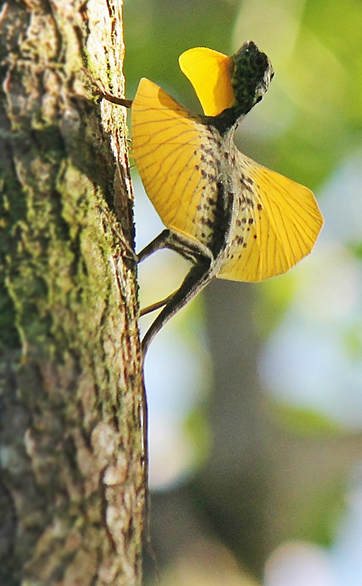 A male Draco lizard extending his gular flag (throat flap) and patagi (wings). While not capable of powered flight Dracos often obtain lift in the course of their gliding flights. Glides as long as 200 feet have been recorded, Wikimedia Wallace's frogs live almost exclusively in the trees, and leap and "fly" from tree to tree or to bushes. The membranes between their toes and loose skin flaps on their sides catch the air as they fall, helping them to glide, sometimes 50 feet or more, to a neighboring tree branch or even all the way to the ground. They also have oversized toe pads to help them land softly and stick to tree trunks. Wikimedia Flying squirrels are able to glide from one tree to another with the aid of a patagium, a furry, parachute-like membrane that stretches from wrist to ankle. Their long tail provides stability in flight. Wikimedia There are five recognized species of flying snake, found from western India to the Indonesian archipelago. They flatten out their bodies and parachute or glide using their ribs to become flat, and then they whip their bodies in a fast, rhythmic S-shape to stay airborne. Wikimedia 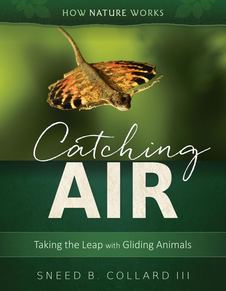 Illustrated with arresting photographs, Sneed B. Collard's Catching Air: Taking the Leap with Gliding Animals takes us around the world to learn why so many gliders live in Southeast Asia, and to find out why this gravity-defying ability has evolved in Draco lizards, snakes, and frogs as well as mammals. Why do gliders stop short of flying, how did bats make that final leap, and how did Homo sapiens bypass evolution to glide via wingsuits and hang gliders―or is that evolution in another guise? MLA 8 Citation
Collard, Sneed B., III. "Meet Earth's Incredible Gliders." Nonfiction Minute, iNK Think Tank, 11 Apr. 2018, www.nonfictionminute.org/ the-nonfiction-minute/meet-earths-incredible-gliders.
2 Comments
Can you name the world's fastest mammal? How about the biggest shark? If you said the cheetah, and the whale shark, you’re right! It's safe to say that we will probably never discover faster, or bigger, animals. However, it is still possible to find small animals that can set new records for being tiny. Take frogs, for example. For many years, two kinds of frogs were tied for the honor of being the world's smallest. One species lives in Cuba, the other in Brazil. These frogs are so small that one can perch its whole body on a United States dime. Look at a dime and imagine an adult frog sitting there! Recently, those two little species from Cuba and Brazil lost their title as Earth's smallest frogs, thanks to two scientists from the United States. They were herpetologists (scientists who study amphibians, including salamanders and frogs). In 2009 these scientists were studying frog calls on Papua New Guinea a large island nation north of Australia, in the Pacific Ocean. The scientists were recording frog calls at night. All around, they heard chirping sounds that came from dead leaves on the forest floor. "Probably insects," they thought, but they decided to check. They searched among the leaves but found nothing. Frustrated, they grabbed whole handfuls of leaves and stuffed them into a clear plastic bag. Then they slowly searched through the bag, leaf by leaf. A small frog hopped off one of the leaves! When I say "small frog," I mean one that can sit on a dime with room to spare. It was just 7.7 millimeters long. That's less than a third of an inch. Though the scientists later discovered another slightly bigger relative, the first one is now officially Earth's smallest frog—and Earth's smallest four-footed animal. These tiny frogs are hard to catch. They can leap 30 times their own length. But the herpetologists managed to catch quite a few, take photos of them, and learn about their lives, close up. It wasn't until January 2012 that the scientists announced their discovery. Since this frog was discovered near a village called Amau, it was given the scientific name of Amauensis. Eventually, people may come to call it the Amau frog. In the world of science, the tiny Amau frogs are very big news. 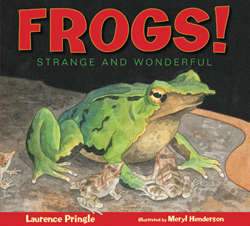 The tiny Amau frogs were discovered just before Laurence Pringle's book on frogs was published--too late to include this big news. At the end of his book FROGS!, Larry has an Author’s Note called “A Life Full of Frogs” in which he tells about his close encounters with frogs as a child, as a father, as a wildlife photographer, and as a neighborhood ecologist acting locally to protect and even create anuran habitats. His relationship with frogs continues to this day. He says, "Our Spring evenings are sweetened by a chorus of spring peepers from the neighborhood wetland forest. Also, almost every day we visit our backyard garden pond. Several green frogs, large and small, live there. There are tadpoles of both green frogs and gray tree frogs." Pringle, Laurence. "Tiny Frogs Are Big News." Nonfiction Minute, iNK Think Tank, 13 Oct. 2017, www.nonfictionminute.org/the-nonfiction-minute/tiny-frogs-are-big-news. |
*NEWS
|
For Vicki Cobb's BLOG (nonfiction book reviews, info on education, more), click here: Vicki's Blog
The NCSS-CBC Notable Social Studies Committee is pleased to inform you
that 30 People Who Changed the World has been selected for Notable Social Studies Trade Books for Young People 2018, a cooperative project of the National Council for the Social Studies (NCSS) & the Children’s Book Council
Categories
All
Abolitionists
Adams Janus
Adaptation
Adaptations
Adkins Jan
Advertising
Aerodynamics
Africa
African American History
African Americans
Africa West
Agriculture
Aircraft
Air Pilots
Air Pressure
Air Travel
Albee Sarah
Alchemy
Alligators
Allusion
American History
American Icons
Amphibians
Amundsen Roald
Anatomy
Ancient
Ancient Cultures
Anderson Marian 1897-1993
Animal Behavior
Animal Experimentation
Animal Intelligence
Animals
Animation
Antarctica
Ants
Apache Indians
Apes
April Fool's Day
Architecture
Argument
Arithmetic
Art
Art Deco
Artists
Arts
Asia
Astronauts
Astronomy
Athletes
Atomic Theory
Audubon Societies
Authors
Autobiography
Automobiles
Aviation
Awards
Bacteria
Baseball
Battuta Ibn
Bears
Beatles
Beavers
Bees
Biodegradation
Biography
Biology
Biomes
Biomimicry
Biplanes
Birds
Black Death
Black History
Blindness
Blizzards
Bombs
Bonaparte Napoleon
Boone Daniel
Botany
Brazil
Bridges
Brill Marlene Targ
Brooklyn Bridge
Brown John
Buffaloes
Building Materials
Butterflies
Caesar
Caesar Julius
Caissons
Calculus
Calendars
Cannibal
Capitals
Caravaggio
Carbon Dioxide
Carnivores
Carson Mary Kay
Cartoons & Comics
Carving (Decorative Arts)
Cascade Range
Castaldo Nancy
Castles
Castrovilla Selene
Cathedrals
Cats
Caves
Celts
Cemeteries
Chemistry
Children's Authors
Child Welfare
China
Choctaw Indians
Christmas
Chronometers
Cicadas
Cinco De Mayo
Ciphers
Circle
Citizenship
Civil Rights
Civil Rights Movements
Civil War
Civil War - US
Climate
Climate Change
Clocks And Watches
Clouds
Cobb Vicki
COBOL (Computer Language)
Code And Cipher Stories
Collard III Sneed B.
Collectors And Collecting
Color
Commerce
Communication
Competition
Compilers
Composers
Computers
Congressional Gold Medal
Consitution
Contests
Contraltos
Coolidge Calvin
Cooling
Corms
Corn
Counterfeiters
Covid-19
Crocodiles
Cryptography
Culture
Darwin Charles
Declaration Of Independence
Decomposition
Decompression Sickness
Deep-sea Animals
Deer
De Medici Catherine
Design
Detectives
Dickens Charles
Disasters
Discrimination
Diseases
Disney Walt
DNA
Dogs
Dollar
Dolphins
Douglass Frederick 1818-1895
Droughts
Dr. Suess
Dunphy Madeleine
Ear
Earth
Earthquakes
Ecology
Economics
Ecosystem
Edison Thomas A
Education
Egypt
Eiffel-gustave-18321923
Eiffel-tower
Einstein-albert
Elephants
Elk
Emancipationproclamation
Endangered Species
Endangered-species
Energy
Engineering
England
Englishlanguage-arts
Entomology
Environmental-protection
Environmental-science
Equinox
Erie-canal
Etymology
Europe
European-history
Evolution
Experiments
Explorers
Explosions
Exports
Extinction
Extinction-biology
Eye
Fairs
Fawkes-guy
Federalgovernment
Film
Fires
Fishes
Flight
Floods
Flowers
Flute
Food
Food-chains
Foodpreservation
Foodsupply
Food-supply
Football
Forceandenergy
Force-and-energy
Forensicscienceandmedicine
Forensic Science And Medicine
Fossils
Foundlings
France
Francoprussian-war
Freedom
Freedomofspeech
French-revolution
Friction
Frogs
Frontier
Frontier-and-pioneer-life
Frozenfoods
Fugitiveslaves
Fultonrobert
Galapagos-islands
Galleys
Gametheory
Gaudi-antoni-18521926
Gender
Generals
Genes
Genetics
Geography
Geology
Geometry
Geysers
Ghosts
Giraffe
Glaciers
Glaucoma
Gliders-aeronautics
Global-warming
Gods-goddesses
Gold-mines-and-mining
Government
Grant-ulysses-s
Grasshoppers
Gravity
Great-britain
Great-depression
Greece
Greek-letters
Greenberg Jan
Hair
Halloween
Handel-george-frederic
Harness Cheryl
Harrison-john-16931776
Health-wellness
Hearing
Hearing-aids
Hearst-william-randolph
Henry-iv-king-of-england
Herbivores
Hip Hop
History
History-19th-century
History-france
History-world
Hitler-adolph
Hoaxes
Holidays
Hollihan Kerrie Logan
Homestead-law
Hopper-grace
Horses
Hot Air Balloons
Hot-air-balloons
Housing
Huguenots
Human Body
Hurricanes
Ice
Icebergs
Illustration
Imagery
Imhotep
Imperialism
Indian-code-talkers
Indonesia
Industrialization
Industrial-revolution
Inquisition
Insects
Insulation
Intelligence
Interstatecommerce
Interviewing
Inventions
Inventors
Irrational-numbers
Irrigation
Islands
Jacksonandrew
Jazz
Jeffersonthomas
Jefferson-thomas
Jemisonmae
Jenkins-steve
Jet-stream
Johnsonlyndonb
Jokes
Journalism
Keeling-charles-d
Kennedyjohnf
Kenya
Kidnapping
Kingmartinlutherjr19291968
Kingmartinlutherjr19291968d6528702d6
Kings-and-rulers
Kings Queens
Kings-queens
Koala
Labor
Labor Policy
Lafayette Marie Joseph Paul Yves Roch Gilbert Du Motier Marquis De 17571834
Landscapes
Languages-and-culture
Law-enforcement
Layfayette
Levers
Levinson Cynthia
Lewis And Clark Expedition (1804-1806)
Lewis Edmonia
Liberty
Lift (Aerodynamics)
Light
Lindbergh Charles
Liszt Franz
Literary Devices
Literature
Lizards
Longitude
Louis XIV King Of France
Lumber
Lunar Calendar
Lynching
Macaws
Madison-dolley
Madison-james
Madison-james
Mammals
Maneta-norman
Maneta-norman
Marathon-greece
Marine-biology
Marine-biology
Marines
Marsupials
Martial-arts
Marx-trish
Mass
Massachusetts-maritime-academy
Mass-media
Mastodons
Mathematics
May-day
Mcclafferty-carla-killough
Mcclafferty-carla-killough
Mckinley-william
Measurement
Mechanics
Media-literacy
Media-literacy
Medicine
Memoir
Memorial-day
Metaphor
Meteorology
Mexico
Mickey-mouse
Microscopy
Middle-west
Migration
Military
Miners
Mississippi
Molasses
Monarchy
Monsters
Montgomery
Montgomery-bus-boycott-19551956
Montgomery-heather-l
Monuments
Moon
Moran-thomas
Morsecode
Morsesamuel
Moss-marissa
Moss-marissa
Motion
Motion-pictures
Mummies
Munro-roxie
Munro-roxie
Musclestrength
Museums
Music
Muslims
Mythologygreek
Nanofibers
Nanotechnology
Nathan-amy
Nathan-amy
Nationalfootballleague
Nationalparksandreserves
Nativeamericans
Native-americans
Native-americans
Naturalhistory
Naturalists
Nature
Nauticalcharts
Nauticalinstruments
Navajoindians
Navigation
Navy
Ncaafootball
Nervoussystem
Newdeal19331939
Newman-aline
Newman-aline
Newton-isaac
New-york-city
Nobelprizewinners
Nomads
Nonfictionnarrative
Nutrition
Nylon
Nymphs-insects
Oaths Of Office
Occupations
Ocean
Ocean-liners
Olympics
Omnivores
Optics
Origami
Origin
Orphans
Ottomanempire
Painters
Painting
Paleontology
Pandemic
Paper-airplanes
Parksrosa19132005
Parrots
Passiveresistance
Patent Dorothy Hinshaw
Peerreview
Penguins
Persistence
Personalnarrative
Personification
Pets
Photography
Physics
Pi
Pigeons
Pilots
Pinkertonallan
Pirates
Plague
Plains
Plainsindians
Planets
Plantbreeding
Plants
Plastics
Poaching
Poetry
Poisons
Poland
Police
Political-parties
Pollen
Pollution
Polo-marco
Populism
Portraits
Predation
Predators
Presidentialmedaloffreedom
Presidents
Prey
Prey-predators
Prey-predators
Prime-meridian
Pringle Laurence
Prohibition
Proteins
Protestandsocialmovements
Protestants
Protestsongs
Punishment
Pyramids
Questioning
Radio
Railroad
Rainforests
Rappaport-doreen
Ratio
Reading
Realism
Recipes
Recycling
Refrigerators
Reich-susanna
Religion
Renaissance
Reproduction
Reptiles
Reservoirs
Rheumatoidarthritis
Rhythm-and-blues-music
Rice
Rivers
Roaringtwenties
Roosevelteleanor
Rooseveltfranklind
Roosevelt-franklin-d
Roosevelt-theodore
Running
Russia
Safety
Sanitation
Schwartz David M
Science
Scientificmethod
Scientists
Scottrobert
Sculpture
Sculpturegardens
Sea-level
Seals
Seals-animals
Secretariesofstate
Secretservice
Seeds
Segregation
Segregationineducation
Sensessensation
September11terroristattacks2001
Seuss
Sextant
Shackletonernest
Shawneeindians
Ships
Shortstories
Silkworms
Simple-machines
Singers
Siy Alexandra
Slavery
Smuggling
Snakes
Socialchange
Social-change
Socialjustice
Social-justice
Socialstudies
Social-studies
Social-studies
Sodhouses
Solarsystem
Sound
Southeast-asia
Soybean
Space Travelers
Spain
Speech
Speed
Spiders
Spies
Spiritualssongs
Sports
Sports-history
Sports-science
Spring
Squirrels
Statue-of-liberty
STEM
Storms
Strategy
Sugar
Sumatra
Summer
Superbowl
Surgery
Survival
Swanson-jennifer
Swinburne Stephen R.
Synthetic-drugs
Taiwan
Tardigrada
Tasmania
Tasmanian Devil
Tasmanian-devil
Technology
Tecumsehshawneechief
Telegraph-wireless
Temperature
Tennis
Terrorism
Thomas Peggy
Thompson Laurie Ann
Time
Titanic
Tombs
Tortoises
Towle Sarah
Transcontinental-flights
Transportation
Travel
Trees
Trung Sisters Rebellion
Tundra
Turnips
Turtles
Typhoons
Underground Railroad
Us-environmental-protection-agency
Us History
Us-history
Ushistoryrevolution
Us History Revolution
Us-history-war-of-1812
Us Presidents
Ussupremecourtlandmarkcases
Vacations
Vaccines
Vangoghvincent
Vegetables
Venom
Vietnam
Viruses
Visual-literacy
Volcanoes
Voting-rghts
War
Warne-kate
Warren Andrea
Washington-dc
Washington George
Water
Water-currents
Wax-figures
Weapons
Weather
Weatherford Carole Boston
Whiting Jim
Wildfires
Winds
Windsor-castle
Wolves
Woman In History
Women
Women Airforce Service Pilots
Women-airforce-service-pilots
Womeninhistory
Women In History
Women-in-science
Women's History
Womens-roles-through-history
Wonder
Woodson-carter-godwin-18751950
World-war-i
World War Ii
World-war-ii
Wright Brothers
Writing
Writing-skills
Wwi
Xrays
Yellowstone-national-park
Zaunders Bo
ArchivesMarch 2021
February 2021
January 2021
December 2020
November 2020
October 2020
September 2020
June 2020
May 2020
April 2020
March 2020
February 2020
January 2020
December 2019
October 2019
September 2019
August 2019
July 2019
May 2019
April 2019
March 2019
February 2019
January 2019
December 2018
November 2018
September 2018
June 2018
May 2018
April 2018
March 2018
February 2018
January 2018
December 2017
November 2017
October 2017
September 2017
March 2017
The NONFICTION MINUTE, Authors on Call, and. the iNK Books & Media Store are divisions of iNK THINK TANK INC.
a 501 (c) (3) nonprofit corporation. To return to the iNK Think Tank landing page click the icon or the link below. :
http://inkthinktank.org/
For more information or support, contact thoughts@inkthinktank.org
For Privacy Policy, go to
Privacy Policy
© COPYRIGHT the Nonfiction Minute 2020.
ALL RIGHTS RESERVED.
This site uses cookies to personalize your experience, analyze site usage, and offer tailored promotions. www.youronlinechoices.eu
Remind me later
Archives
March 2023
February 2023
January 2023
December 2022
November 2022
October 2022
September 2022
June 2022
May 2022
April 2022
March 2022
February 2022
January 2022
December 2021
November 2021
September 2021
April 2021
March 2021
February 2021
November 2020
October 2020
September 2020
June 2020
May 2020
April 2020
March 2020
February 2020
January 2020
October 2019
August 2019
July 2019
May 2019
April 2019
December 2018
September 2018
June 2018
May 2018
March 2018
February 2018
January 2018
December 2017
November 2017
October 2017
September 2017



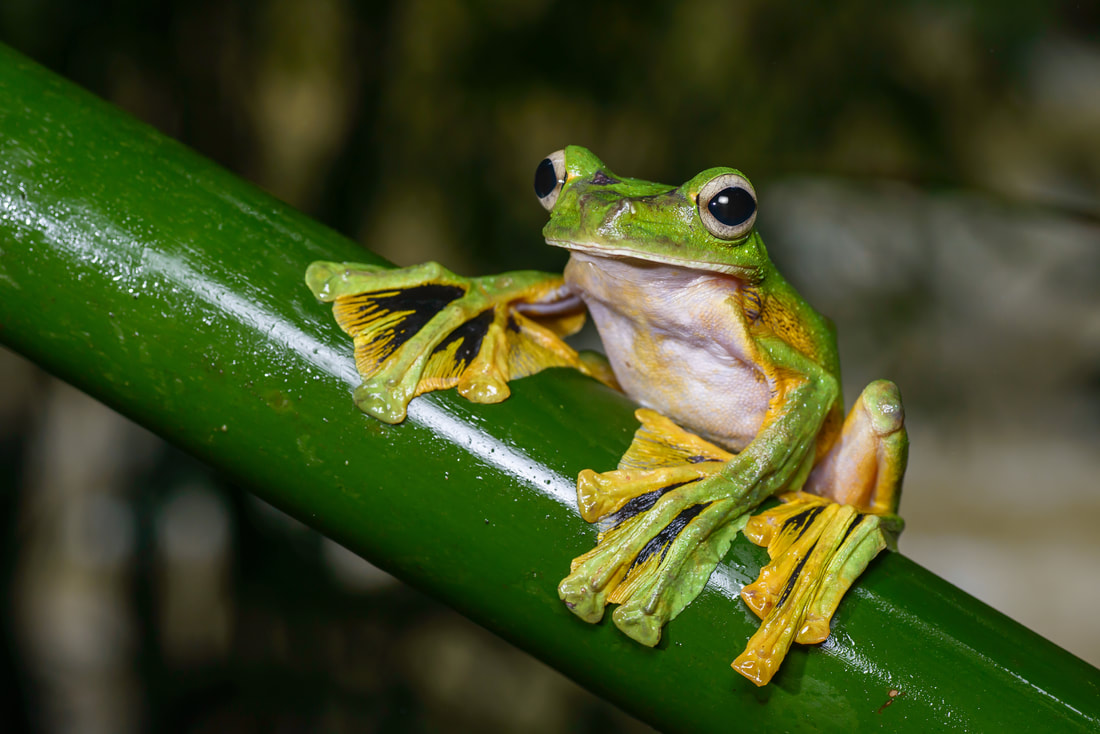
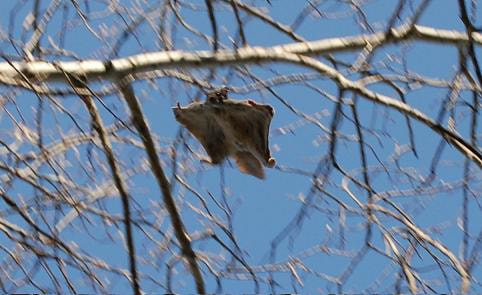
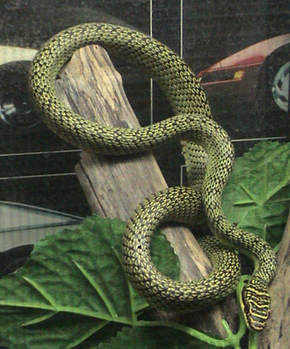



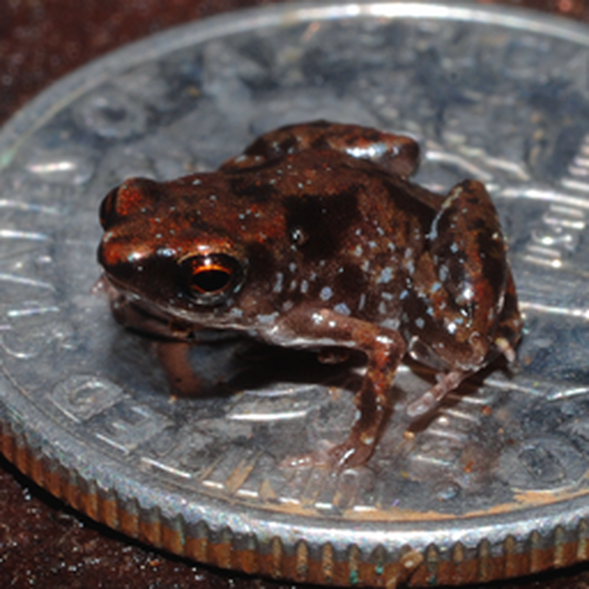

 RSS Feed
RSS Feed
